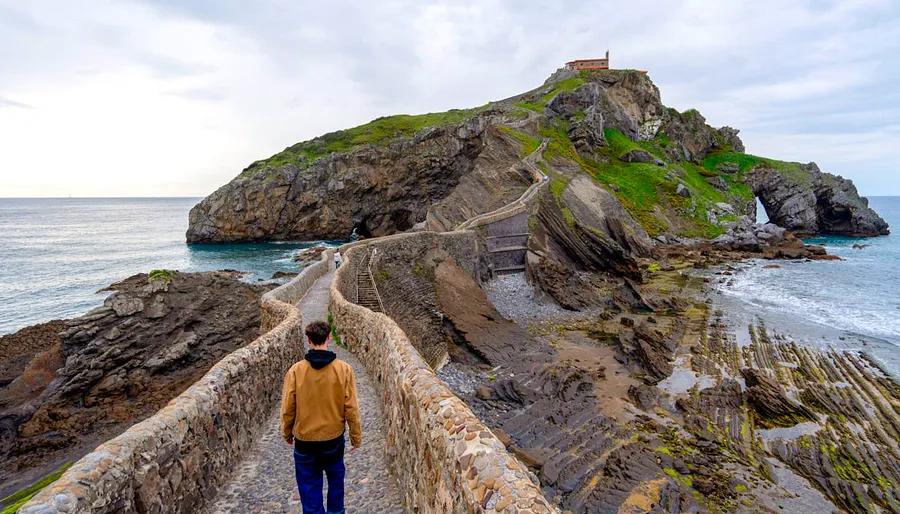On These 'Forever' Cruises, You Live Aboard and Explore the World for Years. Is It a Dream Come True or a Nightmare?

When Shirene Thomas, a retired social services administrator from Illinois, learned about a new cruise option offering residences at sea for as little as $30,000 a year, she sold everything she owned and eagerly signed up to explore the world.
Instead, she has spent almost a year homeless, wandering through Europe. The first company she invested in, Life at Sea, went bankrupt last November, just as she and many others arrived in Istanbul, ready to embark on their adventures. With no home and all her belongings gone, she enrolled in a three-and-a-half-year cruise with Villa Vie Residences to be on its inaugural ship, the Villa Vie Odyssey, which was scheduled to depart from Belfast in May but remains docked for ongoing repairs and upgrades.
“It’s been tough,” Thomas remarked. “There have certainly been wonderful moments. I’ve experienced and accomplished a lot. But it’s been the complete opposite of what we anticipated. We didn’t want to take more flights or switch hotels or search for places to eat … I think I’ve slept in over 100 beds.”
With the refurbished 30-year-old ship currently undergoing sea trials in Belfast, she is hopeful that the Villa Vie Odyssey will finally set sail this month. She mentioned that she has received most of her money back from Life at Sea and that Villa Vie has covered, or is promising to cover, the hotel expenses she incurred since the original sailing date of May 30.
It ought to be one of the most secure places to reside if we can all coexist peacefully.
In light of what she now knows, would she choose to do it all over again?
“That’s an intriguing question,” she replied after a moment's reflection.
“Yet, I truly think this is the future—pun intended. … Imagine it as a floating metropolis that can steer clear of pandemics, civil turmoil, hurricanes, typhoons, and gun violence.
“People are quite hopeful,” she noted about the other passengers who have been waiting in Belfast to embark, including around 40 others who had also initially signed contracts with Life at Sea. “It’s a groundbreaking venture, and hopefully, people will remember us as trailblazers.”
Indeed, with the remarkable rise in cruising's popularity since the pandemic, both buyers and sellers acknowledge that, despite the challenges companies face in launching new residential cruise ships, this business model holds significant promise—and risks.
Who are the companies venturing into this market? In what ways do their ships differ from traditional mass-market cruises? What are the costs of the cabins? And who are the buyers?

Photo by Ollie Jones/Courtesy of Ulyssia
What is the total number of residential cruise ships currently in existence?
Villa Vie anticipates that the Odyssey will be the second residential ship to launch, aiming to offer pricing accessible to the average person. The first, the World, has been in operation for 20 years but is invitation-only, with cabins priced in the millions. Next week, the same team that successfully launched the first ship plans to reveal details about a second vessel, an ultra-luxurious yacht named Ulyssia, which will feature 132 residences and is expected to debut in 2029. Additionally, another company, Storylines, is constructing a ship set to launch in 2027, offering pricing that sits between Villa Vie and the World. Several other companies are at various planning stages to develop similar business models.
Considering the situation with Life at Sea, doesn't investing in one of these ships pose a significant risk?
“If you believe there’s no risk involved, then you’re not approaching this with your eyes wide open, right?” remarked Myle Hammond, a real estate investor from Alexandria, Virginia, who has secured a cabin with Storylines. “There are always various risks. But what’s the potential reward? … I see this as a fantastic concept that I genuinely hope succeeds.”
Hammond and other buyers explained that it’s much like investing in undeveloped real estate; thorough research is essential.
John Hennessee, who, with his wife Melody, invested in Villa Vie after growing weary of their RV lifestyle post the sale of their Florida business, is optimistic about the future of Villa Vie Residences. He predicts that the value of his cabin on the Villa Vie Odyssey will double once the ship sets sail. Similarly, Martin Buggy, who along with his partner Melissa Edyvean, has purchased a cabin with Storylines, views their investment as both a potential retirement haven and a financial opportunity. He mentions that prices are already climbing, and his rough calculations suggest that if they use the cabin for just half the year and allow the ship to lease it out for the remaining time, it should break even financially.

Courtesy of Villa Vie Residences
What distinguishes these ships from traditional mass-market cruises?
Villa Vie and Storylines present their offerings as lifestyle communities rather than typical cruise lines. “When individuals approach us, they aren’t seeking a cruise; they want to check off items from their bucket list and experience it all in an enjoyable, secure environment alongside like-minded individuals,” stated Alister Punton, founder of Storylines.
The Villa Vie Odyssey is a renovated vessel that previously operated as the Braemar for British Fred Olsen Cruise Lines. Although its features—such as three restaurants, a pool, a spa, and a culinary center for cooking classes—are reminiscent of a traditional cruise ship, it will also provide medical and dental clinics, as well as a golf simulator, catering to guests looking for longer stays.
Storylines announced that its vessel, accommodating up to 1,000 guests, will feature 20 dining options, a complete hospital, a veterinary clinic for pets, a wellness center, and even an educational facility for residents with children.
One of the most significant distinctions between residential ships and conventional cruises lies in their itineraries. Both vessels will travel around the globe every three and a half years, allowing for multi-day stops instead of the typical one-day visits.
Misty Frost from Phoenix, who along with her husband Dean has acquired a cabin with Storylines, described it as a “floating home.” “For instance, if we want to spend a month in Italy,” she explained, “we can do that and simply reunite with the ship wherever it may be.”

Courtesy of Storylines
What are the costs associated with residential cruises?
Villa Vie provides options to lease or purchase cabins, with flexible pay-as-you-go plans for 90-day intervals. Purchase prices range from $99,000 to $349,000. Buyers are responsible only for operational expenses, which vary from just under $2,000 to just over $4,000 per person each month. “That’s less expensive than living on land,” noted Hennessee. Fees cover meals, wine and beer during dinner, certain excursions, housekeeping, laundry, gratuities, entertainment, enrichment activities, and Starlink Wi-Fi.
Cabins with Storylines begin at $600,000 for fractional ownership and can reach nearly $10 million for four-bedroom units. They also have all-inclusive monthly operational fees, which differ based on the cabin type.
Who is investing in residential cruises?
Buyers hail from various parts of the globe, though the majority are from the United States, as noted by both companies. Some are retired, while others can work remotely from anywhere. Many are seasoned travelers. “We do see a considerable number of [former] cruisers,” shared Villa Vie founder and CEO Mikael Petterson. “However, many have never cruised; they simply want to explore the world,” he continued. “I even have one individual who survived a plane crash and now avoids flying. Yet, he loves to travel, making this the ideal solution for him.”
Evaluation :
5/5



